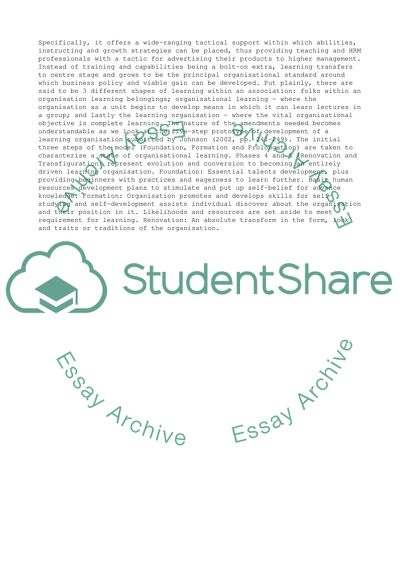Cite this document
(“Organisational Behaviour Theories and Modern Learning Organisation Essay”, n.d.)
Organisational Behaviour Theories and Modern Learning Organisation Essay. Retrieved from https://studentshare.org/management/1537640-critically-evaluate-the-following-statement-most-ideas-representative-of-organizational-behavior-theories-are-relevant
Organisational Behaviour Theories and Modern Learning Organisation Essay. Retrieved from https://studentshare.org/management/1537640-critically-evaluate-the-following-statement-most-ideas-representative-of-organizational-behavior-theories-are-relevant
(Organisational Behaviour Theories and Modern Learning Organisation Essay)
Organisational Behaviour Theories and Modern Learning Organisation Essay. https://studentshare.org/management/1537640-critically-evaluate-the-following-statement-most-ideas-representative-of-organizational-behavior-theories-are-relevant.
Organisational Behaviour Theories and Modern Learning Organisation Essay. https://studentshare.org/management/1537640-critically-evaluate-the-following-statement-most-ideas-representative-of-organizational-behavior-theories-are-relevant.
“Organisational Behaviour Theories and Modern Learning Organisation Essay”, n.d. https://studentshare.org/management/1537640-critically-evaluate-the-following-statement-most-ideas-representative-of-organizational-behavior-theories-are-relevant.


